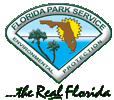|
Take a look at some of the state’s
biggest exotic trouble-makers and what they mean for the future
of Florida’s native species
and habitat.
|

Photo by Timothy Collins &
Timothy Rawlings |
HOW DID THEY GET HERE?
Typically,
an invasive species is a creature that has been introduced by humans
to a new location where it does not occur naturally. These invasive
species become capable of establishing a breeding population without
the help of humans and can spread throughout the new region. In Florida’s
case many of the established invasive species arrived as a result
of the pet or shipping trade. Some have even been deliberately introduced
into the environment to help control pests on farms. Others have
been released into the wild by owners who no longer want them.
WHY FLORIDA?
Florida has an ideal
tropical climate with a variety of habitats as well as easy access
to the Atlantic, Caribbean, and Gulf of Mexico. So it’s an
ideal spot for invasive species to make themselves at home. Florida’s
southern proximity and a climate and habitat similar to that of South
America and the Caribbean make it very easy for invasive species
to adapt and flourish in this region.
TYPES OF ANIMALS
You might be surprised
to learn which animals in Florida are non-native. Ever stepped out
on your patio at night and see those huge toads hopping around in
your lawn. These toxic toads called Giant Toads (Bufo Marinus) are
native to the Amazon Basin in South America. They were introduced
into the Florida environment by the pet trade and to help eradicate
pests from sugar-cane farms. Along with non-native amphibians, Florida
is home to many foreign reptiles including lizards, geckos, snakes,
and even the Spectacled Caiman, native to South America. Some of
the most thriving non-native reptiles in Florida are the Burmese
Pythons and Nile Monitors. There are also almost 200 non-native bird
species residing in Florida. Some of them include the King Vulture,
Mandarin Duck, and a variety of hawks, parrots, and perching birds.
There are also many non-native mammals including the Norway Rat,
Vervet and Squirrel Monkeys. .
Aquatic species are also another big obstacle
in the fight against invasive species. Sources of these invasive
species include accidental releases from the aquaculture industry,
pet releases, live seafood escapes, and ballast water from ships.
There are currently 40 species of exotic aquatic species that have
established populations. The non-native species established in
Florida’s marine environment
include 9 species of fish, 3 mollusks (one of which is the apple
snail), and 12 crustaceans.
|

Photo by United States
Geological Survey |
NOT ONLY ANIMALS
It is not only non-native
animals that are changing Florida’s
ecosystem. There are more than 900 nonnative plant species established
in Florida and they make up at least 27 percent of the total flora
of the state. For example, melaleuca trees are severely and rapidly
altering ecosystems by out-competing indigenous plants and altering
topography and soils. State officials estimate that melaleuca infests
about 500,000 acres of native wetlands in southern Florida and is
expanding at a rate of 50 acres per day. Citrus Canker is also another
dangerous non-native organism that is not only affecting our trees
but also the state’s economy.
Resources for
this article provided by wikipedia.org, Florida
Wildlife Conservation Commission and Invasive
Species Working Group.
|









